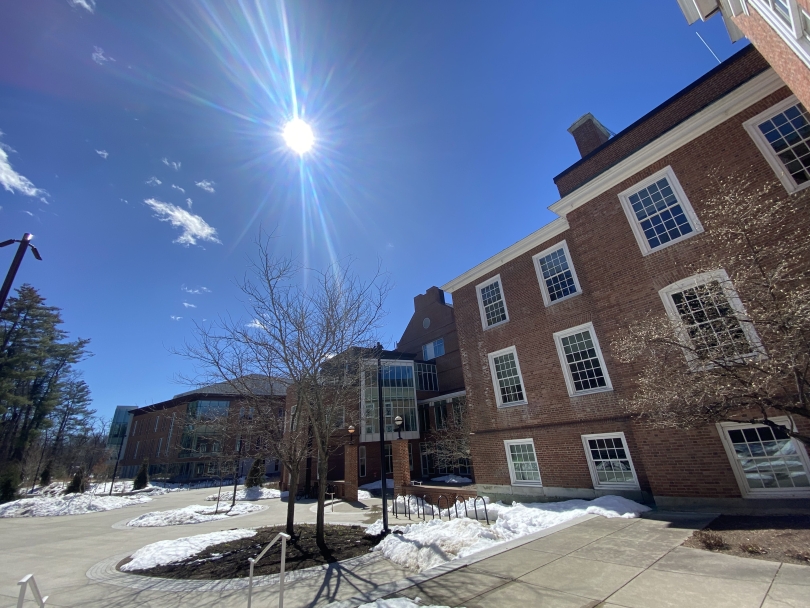
The Beauty of a New England Winter
As a New England local, I was prepared for the chilly and unpredictable weather at Dartmouth when arriving on campus. However, the variation in weather here never ceases to amaze me! Mark Twain once said, "If you don't like the weather in New England now, just wait a few minutes," and while that's true, I think there's a particular beauty in such unpredictability that makes Dartmouth (and its corresponding traditions within each season) like no other school.
Concluding my first winter here, I'd categorize winter at Dartmouth as a "5-step" process:
1. FIRST WINTER:
First winter is one of my favorite steps if not my favorite. This is the very first snowfall of the season, where you can see the first snow clumps falling from the sky. This is a very special moment, as you'll see students (some of whom have never seen snow) rushing out of the library and dorms to watch the snowfall, often trying to catch snowflakes on their tongues. I was studying in the library for a Spanish final with friends when this happened, and we all ran out to catch a glimpse of the first snow!

2. MORE WINTER:
While I love this step, it's true that it's not everyone's favorite. The reality is that winters here are, in fact, long and cold. However, during this step, the first "thick" snowfalls occur on campus, and skiing finally becomes an option! Additionally, it opens the door to winter carnival activities and other winter classics (ice skating, snowball fights, nordic skiing, snowman building, etc.)! The "MORE WINTER" step is simply awesome (in my opinion), but make sure to bring a warm jacket and some snow boots!

3. FOOL'S SPRING
In late winter here, sunny and warm days begin to spontaneously emerge. We "New Englanders" call this the "FOOL'S SPRING." These days, you'll see some students wearing shorts and others wearing thick winter coats! Students sometimes bring out SpikeBall nets and play games on the Green (campus' main quad). While this might seem like the beginning of spring, it's often followed by some more snow and cold weather before spring actually begins.
4. SECOND WINTER + MUD
As I mentioned, after "FOOL'S SPRING," more snow comes and some "muddy" weather arrives. This is because snow starts to melt, and the ground is finally revealed after months of snow. While this step is a bit messy, it means spring is very close, so there's an exciting energy in the air as students return to campus for spring quarter in anticipation of warmer weather.

5. BEAUTIFUL, WARM SPRING
Finally, spring arrives!! The snow is all melted, and the ground dries. It's almost like summer again! The air is fresh and students are back on the Green, playing games and basking in the sun. Besides step 1, this step is my other favorite on the list. There's simply nothing to replace the beauty of spring as leaves return to the trees and the sun finally comes out.

While this "5-step" list comes from years of experience living in rural New England, it's by no means exact or 100% perfect. New England weather is incredibly variable, and it means that the fluctuation between warm and cold weather can be longer or shorter depending on the year. The key? Always be prepared! Bring clothing for warm and cold weather, to ensure you can thrive here, no matter the day or conditions.
There's a certain beauty in New England weather, no doubt. While some love or hate the fluctuations between warm and cold weather, without them, Dartmouth simply wouldn't be the same. It means that each and every day brings new conditions, and that's exciting. No two days are exactly the same. Our traditions, like Winter Carnival and Homecoming, wouldn't be possible if it were always summer or always snowing. There's beauty in that transition, and I wouldn't exchange it for anything else.
Martin

















